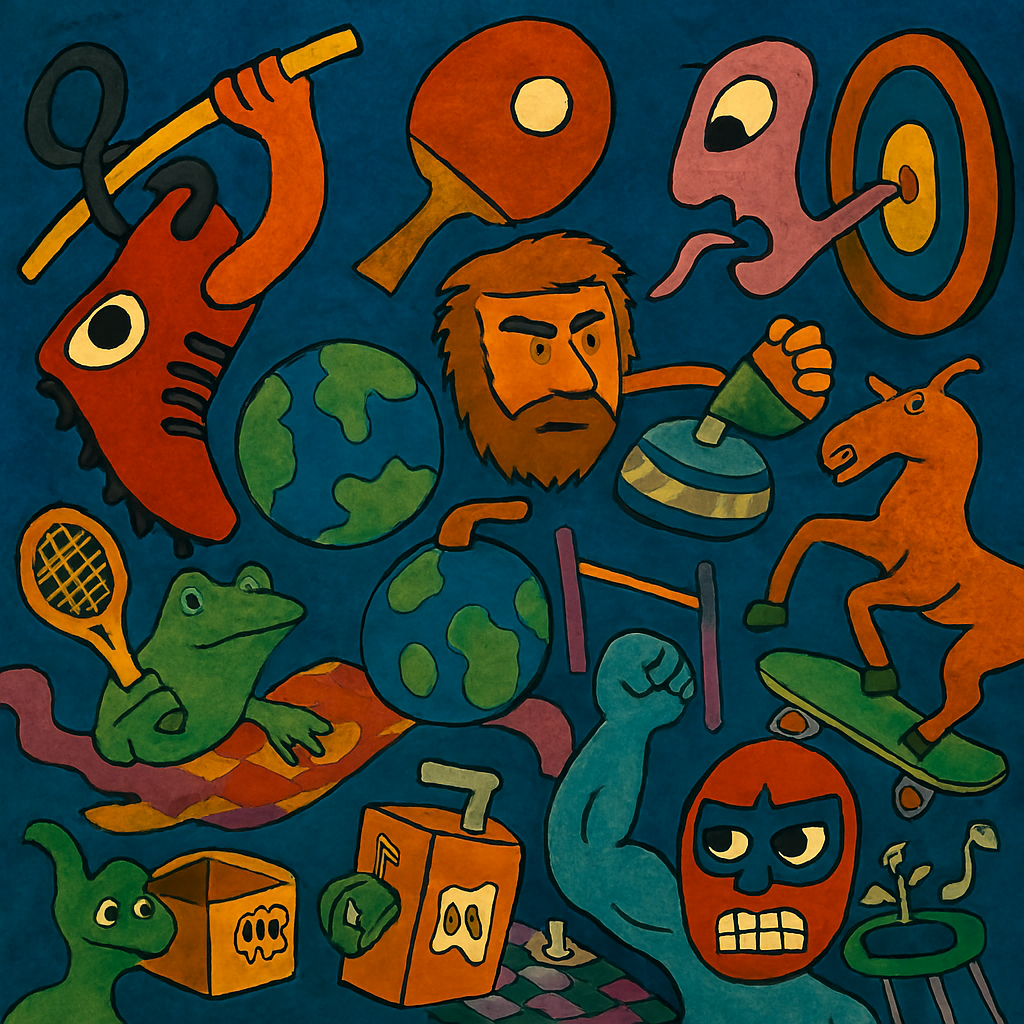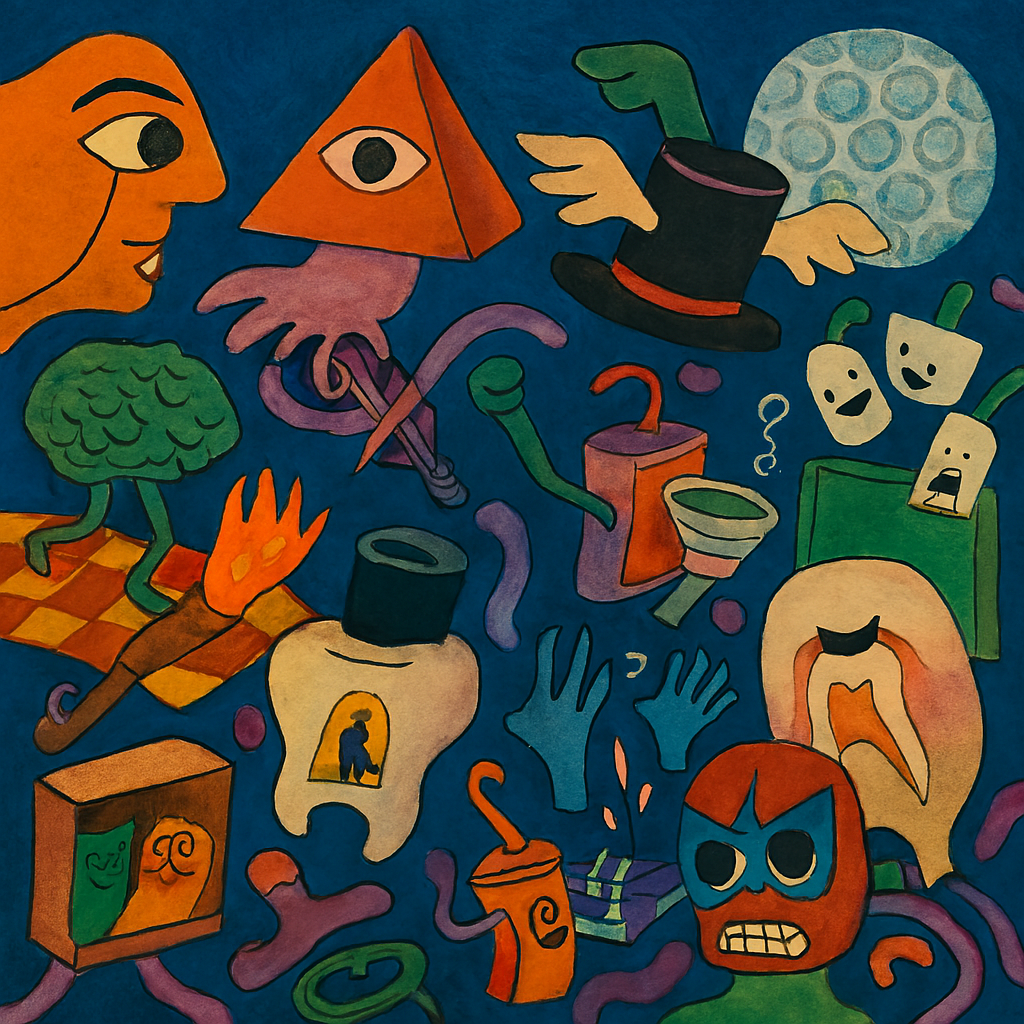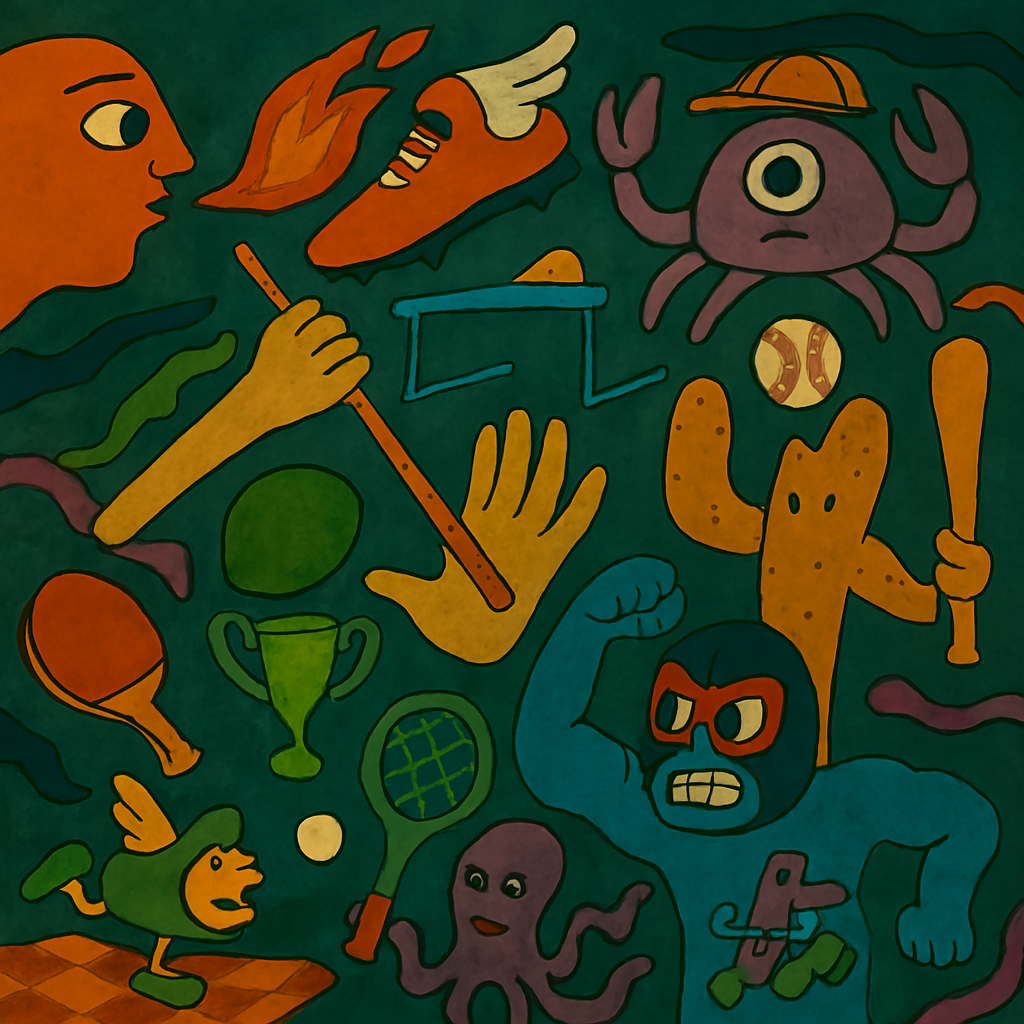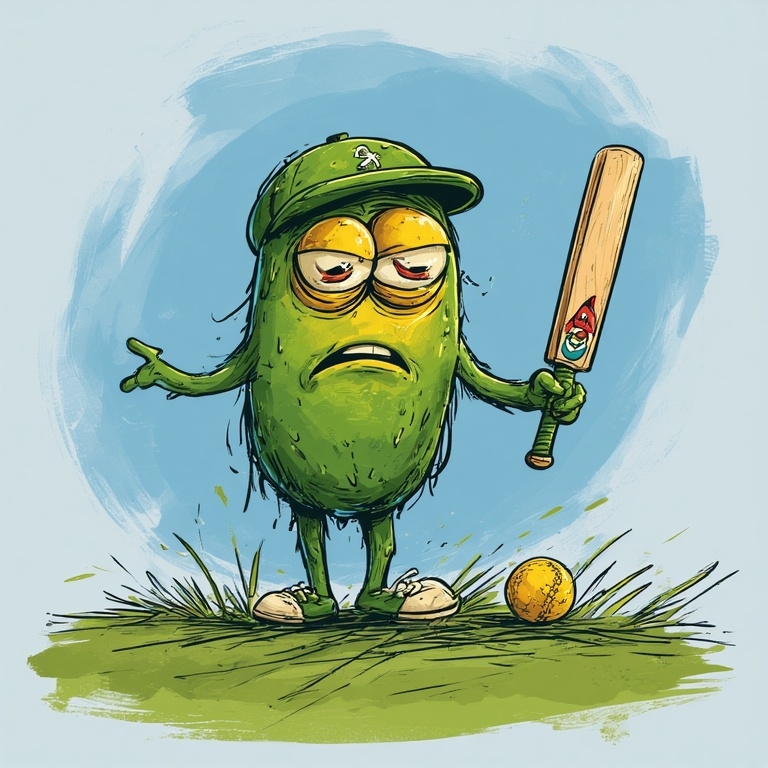Strange Sports Beyond The Powerful Court
A Global Dive into the Strangest Professional Sports You’ve Never Heard Of
Introduction
Sport has always been more than competition — it’s ritual, myth, spectacle, and social glue. Across cultures, athletic expression has served as a mirror for identity, a stage for storytelling, and a crucible for transformation. But the global sporting landscape is no longer defined solely by stadiums, scoreboards, and legacy leagues. Beneath the polished surface of mainstream athletics lies a vibrant substratum of unconventional sports — disciplines that defy tradition, challenge physical norms, and reimagine what it means to play at the highest level.
These sports — from chess boxing to swamp soccer, from kabaddi to bossaball — are not gimmicks or sideshows. They are structured, rule-bound, and professionally governed. They demand training, strategy, and endurance. They cultivate communities, host international tournaments, and crown champions. What makes them “sports” is not conformity to a narrow definition, but their capacity to generate meaning through movement, mastery, and mutual recognition. They are sports because they create stakes — physical, psychological, and symbolic — and because they invite us to witness and participate in something larger than ourselves.
In this expanded arena, the definition of sport becomes porous, adaptive, and culturally recursive. It’s no longer just about speed, strength, or spectacle — it’s about context, creativity, and connection. Toe wrestling, for example, may seem absurd until one considers its rules, its rituals, and the pain tolerance it demands. Quidditch, born from fiction, becomes real through shared imagination and athletic commitment. Kabaddi, rooted in ancient breath-holding games, now fills stadiums with roaring fans and televised drama. These sports are not deviations — they are evolutions.
Their emergence and professionalization signal a tectonic shift in the sporting identity of the world. They decentralize power from legacy institutions and open space for local traditions, hybrid inventions, and playful resistance. They allow sport to be not just a product, but a process — a living archive of human ingenuity. In doing so, they democratize athletic legitimacy. No longer must a sport be globally dominant to be globally meaningful. It need only be real — with rules, with risk, and with resonance.
This shift also reframes the athlete. No longer merely a performer of physical excellence, the athlete becomes a cultural agent — someone who navigates terrain, tradition, and transformation. In swamp soccer, the mud is both opponent and metaphor. In underwater hockey, silence becomes strategy. In bossaball, gravity is not a limit but a canvas. These sports demand not just skill, but symbolic fluency — an ability to play within and against the structures that define them.
Ultimately, the rise of these unconventional sports expands the grammar of global competition. They remind us that sport is not a fixed category, but a dynamic language — one that evolves with culture, technology, and imagination. They challenge us to rethink what counts, who belongs, and how meaning is made. And in doing so, they offer a more inclusive, more creative, and more ethically resonant vision of what sport can be.
This is not just a list of oddities. It’s a map of possibility — a testament to the infinite ways humans move, compete, and connect. Welcome to the outer edges of athletic identity. The rules may be strange, but the stakes are real.
Sport, in its most familiar form, is a ritual of repetition — stadiums echoing with chants, seasons marked by legacy, and athletes sculpted by discipline. But beyond the mainstream lies a constellation of sanctioned strangeness — professional sports that defy convention yet thrive with structure, rules, and global followings. These aren’t backyard games or novelty acts — they’re full-fledged athletic disciplines with governing bodies, international tournaments, and elite competitors.

Rethinking the Boundaries of Sport
These unconventional disciplines aren’t just curiosities — they’re catalysts for redefining what sport can be. They challenge the inherited architecture of athletic legitimacy, where tradition, commercial scale, and institutional endorsement have long dictated what counts. Instead, they offer a decentralized, culturally adaptive model — one where meaning is generated through participation, not pedigree.
By embracing sports like bossaball, kabaddi, or underwater hockey, we begin to see athleticism not as a fixed category but as a living language — one that evolves with imagination, geography, and community. These sports are deeply local and radically global — rooted in specific terrains, rituals, and histories, yet capable of crossing borders and building new audiences. They expand the symbolic grammar of competition, allowing for new metaphors, new bodies, and new ways of being seen.
This shift also reframes the athlete. In these disciplines, the athlete is not just a performer of physical excellence but a cultural agent — someone who navigates terrain, tradition, and transformation. Whether balancing on a unicycle in a hockey match or chasing cheese down a hill, these athletes embody a different kind of mastery — one that values adaptability, creativity, and symbolic fluency.
The rise of these sports signals a broader cultural movement — away from monolithic definitions and toward pluralistic, playful, and ethically resonant forms of expression. They invite us to rethink sport not as a product to consume, but as a process to co-create. They remind us that the rules of play are never fixed — they are negotiated, reimagined, and rewritten with every generation.
A Call to Play Differently
This archive of athletic oddities is not just a list — it’s an invitation. An invitation to expand your definition of sport, to explore the edges of competition, and to recognize the symbolic power of play in all its forms. Whether you’re a seasoned athlete, a curious spectator, or a cultural architect like yourself, these sports offer new ways to engage, imagine, and connect.
So — which of these disciplines speaks to you Have you encountered a local sport that deserves global recognition Do you play in a niche league that feels like home Are you building a new kind of game — one that rewrites the rules entirely
Let’s turn this post into a living archive. Share your stories, your sports, your strange and beautiful rituals of movement. Let’s build a new sporting identity — one that honors tradition but thrives on transformation. One that sees play not as escape, but as emergence.

How Unconventional Sports Reshape Parasport Identity
The rise of unconventional professional sports doesn’t just challenge mainstream athletic norms — it opens new symbolic and structural pathways for parasports and disability athletics. By decentralizing what counts as “sport,” these disciplines dismantle legacy gatekeeping and invite a broader spectrum of bodies, abilities, and movement philosophies into the competitive arena.
Traditional parasports have long mirrored able-bodied formats — wheelchair basketball, para-swimming, blind soccer — adapting existing rules to accommodate different physical realities. While these adaptations are vital and empowering, they often remain tethered to the architecture of legacy sport. Unconventional disciplines, by contrast, offer a more radical reimagining — one that begins not with modification, but with invention.
Take swamp soccer, where terrain neutralizes speed and agility — leveling the playing field for athletes with mobility differences. Or underwater hockey, where breath control and spatial awareness matter more than limb strength. In toe wrestling, the focus shifts to micro-movement and pain tolerance — domains where disabled athletes may bring unique expertise. These sports don’t just accommodate difference — they reframe it as strategic advantage.
Moreover, the symbolic logic of these sports — their embrace of absurdity, hybridity, and cultural specificity — aligns with the lived experience of many disabled athletes. Disability is not just a medical category; it’s a narrative condition shaped by adaptation, resistance, and creativity. Unconventional sports mirror this ethos — they are built on bending rules, reimagining space, and finding meaning in movement that defies expectation.
This shift also impacts representation. In traditional sport, disabled athletes often fight for visibility within rigid hierarchies. In emerging disciplines, visibility is built into the sport’s DNA — because the sport itself is already outside the norm. There’s less pressure to conform, more room to innovate. Athletes become co-creators of the game, not just participants in a modified version of someone else’s rules.
Institutionally, this opens doors for new federations, hybrid tournaments, and inclusive design. Imagine a bossaball league where trampoline surfaces are engineered for prosthetic compatibility — or a parkour tag circuit designed around neurodiverse sensory preferences. These aren’t accommodations — they’re evolutions. They treat disability not as limitation, but as a source of athletic imagination.
Ultimately, the rise of unconventional sports expands the symbolic grammar of parasport. It allows disability athletics to move beyond adaptation and into authorship — crafting new games, new rules, and new ways of being seen. It invites us to ask not just how disabled athletes can fit into sport, but how sport can evolve to reflect the full spectrum of human movement.
This is not inclusion by invitation — it’s transformation by design. And it’s already happening.
Chess Boxing
Where intellect meets impact — competitors alternate rounds of chess and boxing. Victory comes by knockout, checkmate, or time expiration — not just brute force. Founded in Berlin in 2003 — inspired by a French graphic novel. Governed by the World Chess Boxing Organisation — with events in London, Moscow, and beyond. Athletes train for dual mastery — mental endurance and physical aggression. Matches begin with chess — four minutes of strategy before three minutes of combat. Mistakes in chess can lead to panic in the ring — fatigue in boxing can cloud judgment. Polymath athletes dominate — often with backgrounds in martial arts and competitive chess. Spectators toggle between cerebral tension and visceral spectacle. Chess boxing collapses the binary of mind versus body — demanding multidimensional skill.
Swamp Soccer
Played in bogs and marshes — soccer meets mud wrestling. Originated in Finland — as military training for endurance. Now a global sport — with world championships and national leagues. Teams of six — matches are shorter and slower than traditional soccer. Movement is exhausting — players sink, slip, and stumble. Rules are adapted — offside is ignored, substitutions are frequent. The ball barely rolls — tactics rely on brute force and positioning. Swamp soccer turns terrain into a competitor — messy, chaotic, and strangely beautiful.
Sepak Takraw
Aerial acrobatics meet volleyball — played with feet, head, and chest. Originated in Southeast Asia — centuries-old tradition. Professional leagues thrive in Thailand, Malaysia, and Indonesia. The ball is rattan — lightweight and fast. Players perform bicycle kicks and somersaults — mid-air precision is key. Sepak Takraw is a dance of flight and force — tradition fused with spectacle.
Toe Wrestling
A literal toe-to-toe battle — competitors lock feet and wrestle. Originated in Derbyshire, England — in a pub in the 1970s. Now a professional sport — with annual world championships. Referees monitor grip and pressure — disqualifications are rare but possible. Toe wrestling is both absurd and oddly noble — a sport where the smallest digit becomes the fiercest weapon.
Underwater Hockey
Played at the bottom of a pool — athletes wear snorkels and push a puck with small sticks. Originated in England in the 1950s — now played professionally worldwide. Teams rely on breath control, spatial awareness, and silent coordination. Underwater hockey is a test of lung capacity and aquatic agility — a submerged ballet of strategy.

Quidditch
Inspired by the Harry Potter series — adapted into a full-contact sport. Played on broomsticks — with chasers, beaters, keepers, and seekers. The sport has governing bodies, world cups, and professional leagues. Quidditch blends fantasy with athleticism — imagination made competitive.
Kabaddi
A contact sport rooted in South Asian tradition — one player invades enemy territory while holding their breath. Professional leagues thrive in India — with televised matches and celebrity athletes. Kabaddi is a game of breath, balance, and brute force — ancient rules in modern arenas.
Bossaball
Played on an inflatable court with a trampoline — combining soccer, volleyball, and gymnastics. Originated in Spain — now played professionally in Brazil, Belgium, and beyond. Players bounce, flip, and spike — scoring with acrobatic flair. Bossaball is kinetic spectacle — gravity-defying and rhythmically wild.
Extreme Ironing
Athletes iron clothes in extreme environments — mountaintops, underwater, while skydiving. Originated in England — now a global sport with organized events. Extreme ironing is both satire and endurance — domesticity meets danger.
Cycle Ball
Played on bicycles — athletes use their wheels to control and shoot a ball into goals. Originated in Germany — with professional leagues across Europe. Cycle ball is balance, precision, and pedal-powered strategy — soccer reimagined on two wheels.
Cheese Rolling
Competitors chase a wheel of cheese down a steep hill — often tumbling violently. Held annually in Gloucestershire, England — with international participants. Though chaotic, it’s a sanctioned event — with rules, referees, and repeat champions. Cheese rolling is gravity sport — absurd, dangerous, and fiercely competitive.
Wife Carrying
Male athletes race while carrying female partners through obstacle courses. Originated in Finland — now a professional sport with world championships. Winning couples earn prizes — often based on the wife’s weight in beer. Wife carrying is strength, coordination, and partnership — with a wink of humor.
Buzkashi
Afghanistan’s national sport — players on horseback compete to drag a goat carcass into a goal. Played professionally across Central Asia — with elite riders and massive crowds. Buzkashi is raw, historical, and brutal — sport as tribal ritual.
Snow Polo
Traditional polo adapted for snowy terrain — played with larger balls and winter gear. Held in alpine resorts — with professional teams and luxury sponsors. Snow polo is elegance on ice — equestrian skill meets frozen spectacle.
Rock Paper Scissors
Yes, it’s a professional sport — with world championships and cash prizes. Matches are fast, psychological, and surprisingly intense. Rock Paper Scissors is strategy, bluffing, and ritual — simplicity elevated to competition.

Ferret Legging
Competitors place live ferrets in their trousers — and endure as long as possible. Originated in Yorkshire — now a niche but real sport. Ferret legging is endurance, absurdity, and questionable bravery.
Cardboard Tube Fighting
Players duel with cardboard tubes — judged on style, technique, and sportsmanship. Founded in Seattle — now with international tournaments. Cardboard tube fighting is playful combat — childhood nostalgia made formal.
Shin Kicking
Competitors kick each other in the shins until one falls — with rules and referees. Originated in England — part of traditional festivals. Shin kicking is pain tolerance and timing — folk sport turned professional.
Eton Fives
A handball-like sport played in a three-sided court — with architectural quirks. Originated at Eton College — now played professionally in the UK. Eton Fives is geometry, reflexes, and tradition — sport shaped by space.
Dog Surfing
Dogs ride waves on surfboards — judged on style, confidence, and teamwork. Held in California, Australia, and Japan — with professional canine athletes. Dog surfing is joy, balance, and interspecies sport — pure celebration.
Unicycle Hockey
Hockey played on unicycles — with rules adapted for balance and control. Teams compete internationally — with leagues in Germany, Australia, and Canada. Unicycle hockey is coordination, chaos, and wheel-based finesse.
Parkour Tag
Athletes chase each other through obstacle courses — blending parkour and competitive tag. Professional leagues feature timed matches and ranked players. Parkour tag is speed, agility, and spatial mastery — urban movement turned sport.
Conclusion
These sports may seem bizarre at first glance — but each reflects a unique cultural logic, physical demand, and symbolic resonance. They challenge the boundaries of what we consider “real” sport — proving that athleticism can be playful, cerebral, chaotic, and deeply rooted in local identity. From muddy fields to chess boards, from toes to trampolines, the world of professional sport is far more diverse than mainstream coverage suggests. These disciplines aren’t just weird — they’re windows into how humans express competition, creativity, and community.
Join the Discussion
Which of these sports surprised you most – and which would you dare to try Have you encountered a local sport that deserves global recognition – or played in a niche league that felt like home Let’s expand the definition of sport together – one strange discipline at a time Drop your thoughts, stories, or favorite oddball competitions below – and let’s build a living archive of athletic imagination.
#StrangeSports #GlobalAthletics #ChessBoxing #SwampSoccer #SepakTakraw #ToeWrestling #SportInnovation #CulturalAthletics #BeyondTheBall #UnconventionalGames #AthleticImagination #SymbolicSport #MindBodyCompetition #LocalLegends #SportAsStory #WeirdWorldOfSport #AlternativeAthletics #OddballChampions #Play







2 Comments
Comments are closed.